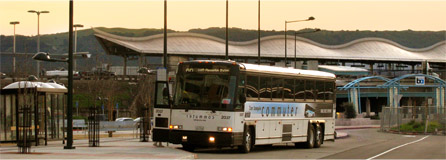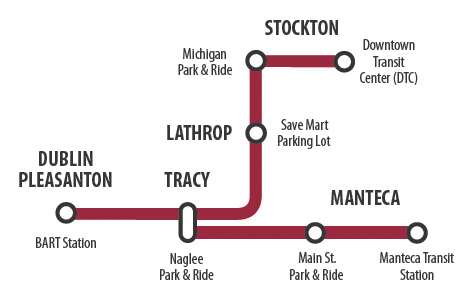It's a tradeoff that 3.9 percent of the Bay Area workforce are willing to make to own an affordable home. It's often not even a choice between living in the city or the suburbs, but the close-in suburbs or the exurbs or San Joaquin Valley.
Richard Scheinin describes the commutes of many Bay Area workers who have chosen long commutes in order to own an affordable, larger single family home in the exurbs within the Bay Area, or outside the Bay Area in the San Joaquin Valley.
The mega-commuting phenomenon is "the result of decades of housing decisions -- or non-decisions," said Dave Vautin, senior transportation analyst with the MTC. "It speaks to the lack of sufficient housing production in our region over many decades. We've gotten ourselves in a giant hole and we're having to dig ourselves out."
"Families with high levels of education and high levels of professional achievement, who think of themselves as homeowners, face a widening gap between what they earn and what housing costs," said Carolina Reid, assistant professor in city and regional planning at UC Berkeley, explains the reason for these extreme commutes:
The workers featured in the article mostly drive, unlike a somewhat similar recent post that focused on long-distance commuters relying on a commuter train. The exception was the most interesting commute involving four modes: auto, commuter bus, BART, employer shuttle:
Dianne Isaak gets ready to board a commuter bus [photo] in Manteca, Calif., in the early morning hours of Thursday, Sept. 10, 2015. Isaak, 31, commutes to her job as a surgical coordinator in San Francisco five days a week. She and her husband and children moved out to Manteca so that they could realize the dream of owning a home. She drives a short distance to then catch a commuter bus that takes her to the Dublin BART station where she then takes BART to San Francisco. She then catches a shuttle bus to work.
Here's the map of the San Joaquin Regional Transit District inter-regional commuter bus that Ms. Isaak takes. Reservations are strongly recommended as capacity is limited, which is why it is also referred to as subscription service. The fare: $7.00, one-way or up to $174 monthly.
|
Effective July 1, 2014 The RTD-BART Commuter offers regular, frequent service to BART. Residents in Stockton can hop on the Commuter at the Downtown Transit Center and travel to the Dublin/Pleasanton BART Station with 7 departures from 5:00A to 5:00P every weekday.
This service has two feeder buses, one originating in Stockton, and one originating in Manteca. The two buses meet at the Tracy Park-and-Ride, where the Manteca passengers transfer to the other bus. The combined bus then travels on to the Dublin/Pleasanton BART Station. RTD’s Interregional Commuter Service is a limited-capacity service and RTD strongly recommends advance reservations to ensure space availability. |
Credit: San Joaquin RTD #150
Similar posts can be found under the tag "long commutes."
FULL STORY: Bay Area commuting nightmares: jobs in city, affordable homes in exurbia

Planetizen Federal Action Tracker
A weekly monitor of how Trump’s orders and actions are impacting planners and planning in America.

Chicago’s Ghost Rails
Just beneath the surface of the modern city lie the remnants of its expansive early 20th-century streetcar system.

Amtrak Cutting Jobs, Funding to High-Speed Rail
The agency plans to cut 10 percent of its workforce and has confirmed it will not fund new high-speed rail projects.

Ohio Forces Data Centers to Prepay for Power
Utilities are calling on states to hold data center operators responsible for new energy demands to prevent leaving consumers on the hook for their bills.

MARTA CEO Steps Down Amid Citizenship Concerns
MARTA’s board announced Thursday that its chief, who is from Canada, is resigning due to questions about his immigration status.

Silicon Valley ‘Bike Superhighway’ Awarded $14M State Grant
A Caltrans grant brings the 10-mile Central Bikeway project connecting Santa Clara and East San Jose closer to fruition.
Urban Design for Planners 1: Software Tools
This six-course series explores essential urban design concepts using open source software and equips planners with the tools they need to participate fully in the urban design process.
Planning for Universal Design
Learn the tools for implementing Universal Design in planning regulations.
Caltrans
City of Fort Worth
Mpact (founded as Rail~Volution)
City of Camden Redevelopment Agency
City of Astoria
City of Portland
City of Laramie































